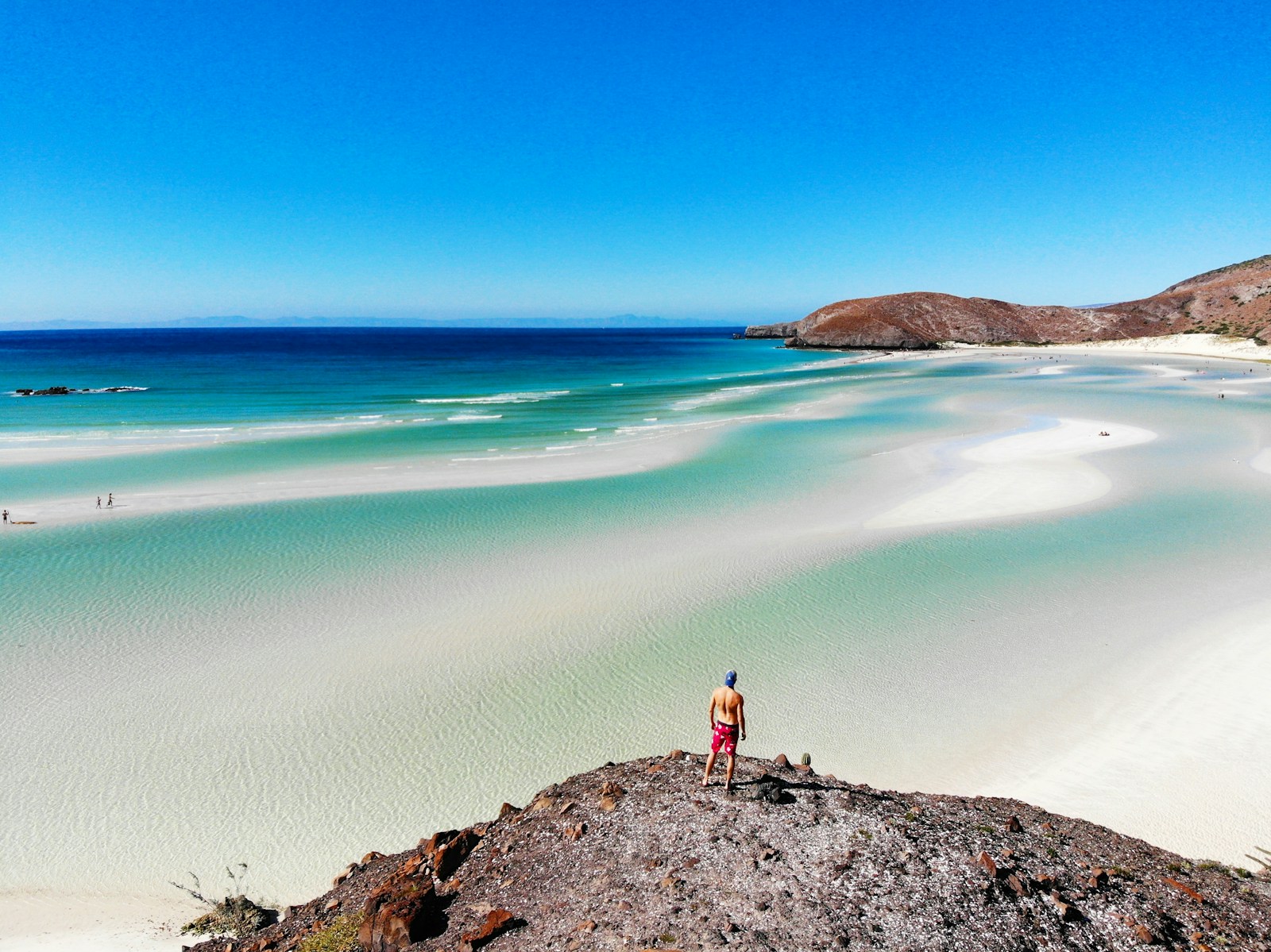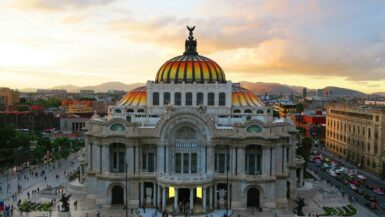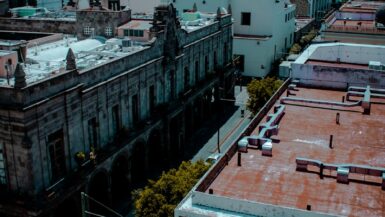How I Found Myself Moving to La Paz
When I first heard about La Paz, Mexico, I pictured sleepy fishing villages and a slower pace of life — and honestly, that’s exactly what I was craving.
After a few years living in the big cities of Playa del Carmen, Guadalajara, and Mexico City, I wanted something different: sunsets over calm waters, seafood tacos, and a cost of living that wouldn’t leave my wallet gasping.
I started researching quieter coastal towns (and the Top Expat Destinations in Mexico helped me a lot). La Paz kept popping up — affordable, peaceful, safe, and still under the radar compared to its glitzy neighbor Los Cabos.
Within a few months, I booked a one-way ticket, packed two suitcases, and landed in Baja California Sur — ready to start a new chapter.
1. First Impressions of La Paz
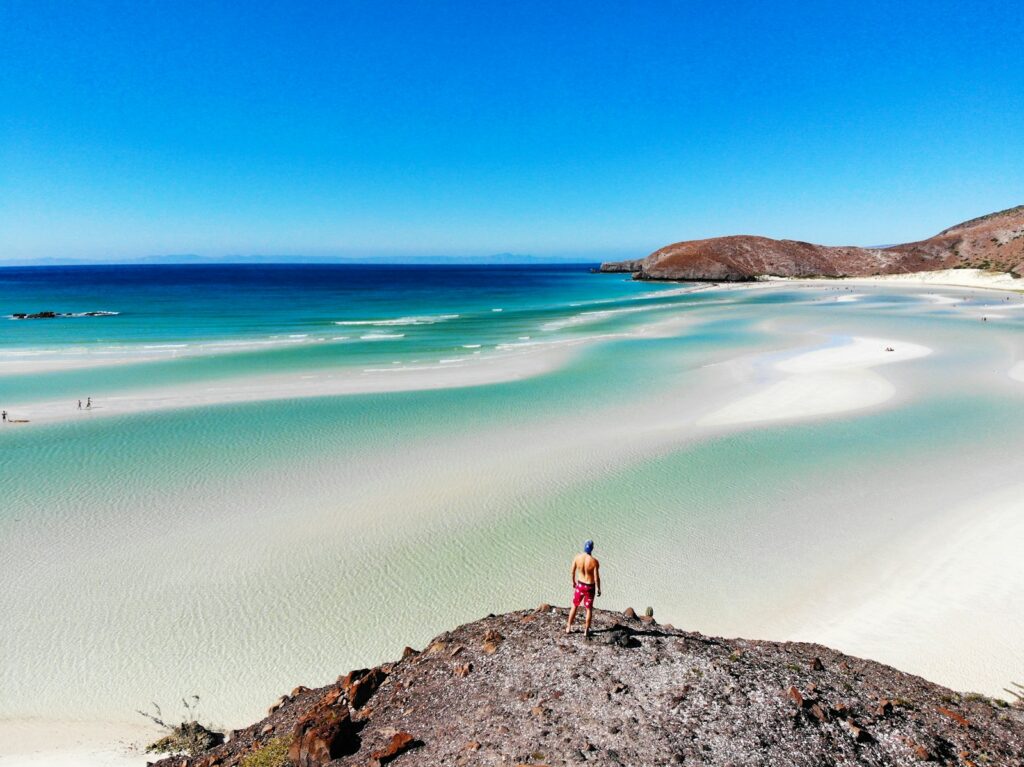
The Laid-Back Baja Vibe
La Paz instantly felt different from anywhere else I’d lived in Mexico.
It was calm. Clean. Walkable. The locals — or Paceños, as they call themselves — greeted me with warm smiles and zero rush.
Instead of giant skyscrapers or tourist mobs, I found colorful low-rise buildings, wide open skies, and a waterfront (the famous Malecón) that stretched for miles. I spent my first afternoon just strolling along the Malecón, watching pelicans dive into turquoise waters while families roller-skated past.
Life here moves slower, but in the best possible way.
If you’re curious about how La Paz compares to other beach towns, the Cost of Living in Puerto Vallarta article gives a great benchmark — spoiler: La Paz is more affordable, less touristy, and has a stronger local feel.
2. Cost of Living in La Paz, Mexico
One of the biggest surprises? How affordable life actually is — even post-2025 inflation.
Here’s what I paid during my first year:
| Expense Category | Monthly Cost (USD) |
|---|---|
| 1BR Apartment (Centro area, furnished) | $700 |
| Utilities (electricity, water, internet) | $100 |
| Groceries (local markets + supermarkets) | $220 |
| Transportation (mostly walking/Uber) | $60 |
| Dining Out (4–5 meals/week) | $150 |
| Private Health Insurance | $95 |
Rent Prices: Beachfront Dreams vs Reality
- A furnished one-bedroom apartment 5 minutes from the Malecón ranged between $600–800 USD/month depending on amenities.
- Modern gated communities like Puerta Cortés? Expect to pay $1,200+ USD easily.
- Long-term rentals are often posted on Facebook groups like “Expats in La Paz” rather than formal rental sites.
Compared to my $1,300 USD rent in Mexico City’s Roma Norte, living here felt like a financial exhale.
Groceries, Dining Out, and Everyday Costs
Shopping at Mercado Bravo or Mercado Municipal made groceries ridiculously affordable — fresh produce, fish, and tortillas for a fraction of U.S. supermarket prices.
Imported goods (like peanut butter or specialty cheeses) are pricier, but you can find almost everything you need at Chedraui or La Comer.
- A kilo of fresh fish like dorado: $6 USD
- 1 liter of milk: $1.50 USD
- 1 dozen eggs: $2.20 USD
Dining out was another bonus:
At local taquerías, I enjoyed giant fish tacos for $1.50 USD each. Even fancy waterfront restaurants like Nim or Bismarkcito usually cost under $25 USD for a full meal.
For a broader cost breakdown across Mexico, the Living in Mexico: Pros and Cons article helped me confirm that La Paz is still one of the best bang-for-buck coastal cities today.
3. Housing Options: Where to Live in La Paz
Finding a place to live in La Paz turned out to be easier than I expected — but you still have to be quick when a good deal pops up.
Downtown vs Marina Area
I started my search in Centro Histórico, the heart of La Paz. Living downtown meant I could walk to cafés, markets, and the Malecón within minutes.
Typical rents here for a furnished one-bedroom range between $600–800 USD/month, depending on updates and proximity to the waterfront.
Over by Marina CostaBaja, the vibe was completely different — newer condos, resort-style amenities, and prices to match. A furnished condo there could easily run $1,500–2,000 USD/month, more comparable to what you’d find in tourist-heavy hubs like Cabo San Lucas.
If you’re comparing different living styles (urban vs coastal resort), check the Best Neighborhoods to Live in Mexico City article — many tips about walkability, safety, and convenience apply here too.
Tips for Finding Affordable Rentals
- Facebook Marketplace and local expat groups are your best friends.
- Word-of-mouth travels fast in a small city — chatting with café owners even helped me find my second rental.
- Long-term lease discounts: I saved about 15% negotiating a 12-month rental instead of going month-to-month.
4. Transportation: Getting Around La Paz
One of my favorite things about living in La Paz?
You don’t need a car to survive — but it’s definitely a plus if you want to explore beyond the city.
Owning a Car vs Using Public Transport
The city itself is very walkable, especially if you live near the Malecón or Centro.
When I needed to venture farther, Uber rides were fast and cheap — most of my rides cost between $3–6 USD.
There are colectivos (small shared vans) and city buses, but schedules aren’t always reliable. Owning a car makes beach-hopping to places like Playa Balandra or Playa Tecolote way easier.
Gas prices in 2025 hover around $5.30 USD/gallon (up slightly from previous years), so it’s worth factoring into your budget if you plan to drive regularly.
The Ultimate Mexico Travel Guide has great tips on renting and owning cars in Mexico if you’re considering that route.
Biking and Walking the City
I bought a second-hand bike for $120 USD, and honestly, it was one of my best decisions.
La Paz is flat, bike-friendly, and has a beautiful bike lane running the entire length of the Malecón.
5. Healthcare in La Paz
I always tell friends: Mexico’s healthcare options were one of the best surprises of moving abroad — and La Paz is no exception.
Public vs Private Options
The city has several private hospitals like Hospital Fidepaz and Hospital Salvatierra, as well as public facilities linked to IMSS and ISSSTE for locals and residents.
For everyday needs, I opted for private care — faster, more modern, and still way more affordable than the U.S.
My Personal Healthcare Costs
Here’s what I actually paid:
| Healthcare Service | Cost (USD) |
|---|---|
| General Doctor Visit | $30 |
| Specialist Consultation (Dermatology) | $45 |
| Teeth Cleaning (Private Dentist) | $40 |
| Monthly Private Health Insurance | $95 |
When I needed lab tests, results came back same-day, and appointments were easy to schedule online — a big upgrade compared to my frustrating experiences living in Playa del Carmen where some services were more tourist-focused.
For broader medical insights, I highly recommend checking out Is It Safe to Travel to Mexico Right Now? — it covers not just safety, but important health system tips too.
3. Housing Options: Where to Live in La Paz
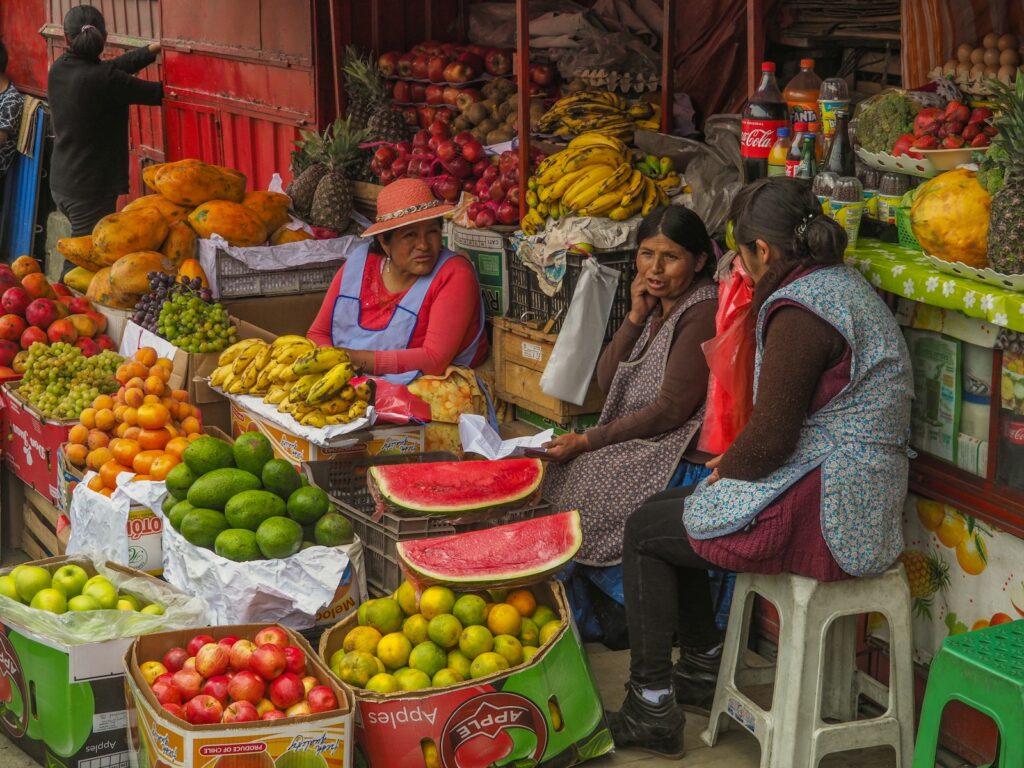
When I first landed in La Paz, my biggest concern was finding a place that was safe, walkable, and close to the waterfront. Fortunately, La Paz offers a variety of neighborhoods depending on your budget and lifestyle — and they’re far less hectic compared to bigger Mexican cities like Guadalajara or Mexico City.
Downtown (Centro Histórico) vs Marina Area
I decided to start my search in Centro Histórico, the heartbeat of La Paz. Living downtown gave me easy access to coffee shops, seafood restaurants, pharmacies, and the Malecón — all within a 5–10 minute walk.
- Typical rents for a furnished 1-bedroom downtown: $600–$800 USD/month.
- I paid $700 USD/month for a fully furnished apartment, utilities not included.
Later on, I explored options at Marina CostaBaja — a luxurious gated community about 10 minutes north of the city center.
- Here, rents for a modern 2BR condo easily started around $1,500–$2,200 USD/month, depending on the view and amenities.
If you prefer the quiet lifestyle with yacht club access and private beaches, CostaBaja might be a dream. But if you’re like me and love living like a local, Centro offered the best balance of value and culture.
Similar comparisons exist when you look at Best Neighborhoods to Live in Mexico City — high-end vs authentic local living.
Tips for Finding Affordable Rentals
Finding rentals in La Paz can feel a little “old school” compared to U.S. online platforms. Here’s what worked for me:
- Facebook Groups: Search “Rentals La Paz BCS” or “Expats in La Paz Mexico.”
- Walking Around: Several landlords put up handwritten “Se Renta” signs.
- Word-of-Mouth: My favorite taco stand owner actually tipped me off to an apartment that never even got listed.
When I negotiated directly with owners (instead of agencies), I saved almost 15% by agreeing to a 6-month lease upfront.
One thing I noticed: during high tourist seasons (December–March), prices creep up by 10–20%, so it pays to lock in longer contracts during the off-season if you can.
If you’re considering moving to any Mexican city, Moving to Mexico Ultimate Guide is a great resource.
4. Transportation: Getting Around La Paz
One of the biggest shifts after leaving bigger cities like Guadalajara was just how easy it is to get around La Paz.
I didn’t even rent a car for the first few months.
If you live near Centro or the Malecón, you can easily walk to:
- Grocery stores like Chedraui and Ley
- Fresh produce markets
- Great local coffee shops (shoutout to Doce Cuarenta)
Owning a Car vs Using Public Transport
I got by using Uber most of the time.
- Short Uber rides around town cost about $3–5 USD.
- Trips to Playa Balandra or Playa Tecolote (20–30 min drive) cost $12–18 USD each way.
There’s also a local bus system and colectivos (small vans), but schedules are unpredictable. For day-to-day errands, walking/Uber is all you need — but if you want to explore the Baja Peninsula properly (Todos Santos, Loreto, Cabo Pulmo), owning a car becomes essential.
Gas prices in Baja California Sur averaged around $5.30 USD/gallon as of early 2025 — slightly higher than mainland Mexico due to shipping costs.
If you’re serious about road trips, the Mexico Travel Tips article gives excellent advice about renting or buying vehicles legally in Mexico.
Biking and Walking La Paz
La Paz is flat, which makes it perfect for biking.
There’s even a dedicated bike lane that runs the entire stretch of the Malecón — one of my favorite ways to get around for sunset rides.
I picked up a second-hand mountain bike for $120 USD through Facebook Marketplace, and honestly, it paid for itself within two months by saving on Uber rides.
Walking is also safe and enjoyable during most months (except during the brutal midday heat in July and August — more on that later).
5. Healthcare in La Paz
I always say: if you’re worried about healthcare abroad, La Paz will pleasantly surprise you.
Compared to my experiences dealing with expensive U.S. medical systems — and the tourist-trap clinics in Playa del Carmen — the private healthcare in La Paz is fast, affordable, and high quality.
Public vs Private Care
There are two main options:
- Public System (IMSS): Very affordable for residents but often comes with longer wait times.
- Private Clinics: Like Hospital Fidepaz, Hospital Salvatierra, and specialized private practices all over Centro.
I personally stuck with private care and here’s what I paid out of pocket:
| Service | Cost (USD) |
|---|---|
| General doctor consultation | $30 USD |
| Dermatologist appointment | $45 USD |
| Routine bloodwork panel | $60 USD |
| Teeth cleaning (private dentist) | $40 USD |
I also picked up a private expat insurance plan for about $95 USD/month, which covered emergencies, hospitalizations, and specialist visits. If you’re planning shorter stays or frequent travel, having reliable travel insurance for Mexico is a smart backup — especially during hurricane season.
If you’re curious about overall safety (including healthcare security), I strongly recommend reading Is It Safe to Travel to Mexico Right Now?, which helped me feel more confident about the medical care available in smaller cities.
Internet and Working Remotely
One of my biggest questions before moving to La Paz was whether the internet would be reliable enough for remote work — and thankfully, the answer was yes.
I work full-time online (Zoom meetings, file uploads, content writing), and here’s my real experience:
Internet Speeds and Reliability
- Fiber-optic internet is widely available through providers like Telmex and Totalplay.
- My typical home Wi-Fi speeds: 50–100 Mbps download, 20 Mbps upload.
- Monthly cost for unlimited fiber: $35–45 USD.
I did experience occasional outages during stormy summer afternoons, but they rarely lasted longer than 1–2 hours. Having a backup mobile hotspot saved me twice during critical meetings.
If you’re planning a digital nomad lifestyle across Mexico, the Ultimate Mexico Travel Tips Guide gives a lot of helpful insights into staying connected in more rural areas too.
Cafés and Coworking Spaces

When I needed a change of scenery, I usually worked from:
- Doce Cuarenta Café — solid Wi-Fi, big tables, lots of outlets.
- Café La Choya — quieter, more residential vibe.
- Ginkgo Coworking — a modern coworking space near Centro with private desks starting at $10/day.
Baja is also becoming a bit of a digital nomad hotspot thanks to its combination of low cost of living, great beaches, and fast internet — much like Puerto Vallarta but without the crowds (Cost of Living in Puerto Vallarta).
10. Things to Do in and Around La Paz
Bored in La Paz? Almost impossible.
Whether you’re a beach bum, an adventure seeker, or a foodie, there’s no shortage of things to fill your weekends.
Beaches, Islands, and Outdoor Adventures
- Playa Balandra — repeatedly ranked one of the most beautiful beaches in the world. Shallow, warm turquoise water perfect for paddleboarding.
- Isla Espíritu Santo — incredible snorkeling and sea lion tours (I booked mine for $70 USD through a local agency).
- Playa Tecolote — great for beachside tacos and cold beers, just a 25-minute drive from Centro.
Many tours (like whale shark snorkeling or kayaking trips) can be booked directly on the Malecón — just make sure you’re booking with reputable operators. Mexico Safety Guides offer great tips on picking safe, licensed tours.
Weekend Trips to Todos Santos and Loreto
One of the huge bonuses of living in La Paz is how many amazing places are a short drive away:
- Todos Santos: A bohemian surf town just an hour south. Think organic cafés, art galleries, and hip boutiques.
- Loreto: A quieter colonial town 4 hours north, perfect for a weekend escape full of whale watching and history.
Both places offer very different vibes from La Paz, and exploring Baja was a major highlight of my first year here.
11. Cultural Life and Festivals
While La Paz is quieter compared to bigger cities like Guadalajara or Oaxaca, it still hosts some pretty vibrant cultural events throughout the year.
Living Mexican Traditions
Locals here take Día de los Muertos (Day of the Dead) seriously, and the altars and parades downtown are beautiful but much more intimate compared to what you see in giant cities.
I also stumbled into events like:
- Carnaval La Paz (February): Street parades, live music, and food stands along the Malecón.
- Festival de Día de la Marina (June): Honoring Mexico’s naval history with fireworks and beach parties.
These events are a fantastic way to connect with locals and experience authentic Baja culture beyond just tourism.
If you’re passionate about experiencing deeper Mexican culture as an expat, Living in Mexico: Pros and Cons breaks down why smaller towns like La Paz offer a richer, slower experience compared to bigger tourist hubs.
12. Food Scene in La Paz
If you’re a seafood lover, La Paz might just be your paradise.
After living in bigger cities where “fresh fish” often meant yesterday’s catch trucked in from hours away, having access to same-day seafood right off the boat felt like luxury.
Best Places to Eat Tacos and Seafood
Here were my go-to spots:
- Mariscos El Toro Güero: Huge portions of shrimp cocktails and fish tacos for under $8 USD.
- Tacos El Estadio: Best carne asada tacos in town — 4 tacos and a soda cost me about $5 USD.
- NIM Restaurante: Upscale dining with a Baja twist — expect to spend around $25–30 USD for a full dinner.
La Paz has a growing number of international restaurants too (Italian, Japanese, vegan), but honestly, nothing beat the fresh ceviche and taco stands along the Malecón.
For tips on navigating Mexican markets, the Ultimate Mexico Travel Tips post gives awesome advice on what to expect.
Local Markets Worth Exploring
Mercado Bravo and Mercado Madero became my staples for affordable produce, meats, and household goods.
- A week’s worth of fruits and veggies usually cost me around $15–20 USD.
- Buying local (rather than shopping exclusively at supermarkets like Walmart or Soriana) definitely kept my monthly grocery budget in check.
13. Pros of Living in La Paz
Looking back, there’s a lot I genuinely loved about calling La Paz home.
My Top Pros:
- Affordability: Much cheaper than tourist-heavy Cabo San Lucas, with similar beaches.
- Laid-back pace: No big-city hustle and stress.
- Safe atmosphere: I felt secure walking alone, even at night, something I didn’t always feel in Playa del Carmen.
- Natural beauty: Every sunset felt like a screensaver moment.
- Real Mexican culture: It hasn’t been overrun by tourists yet — it’s still authentically Mexican.
If you’re looking for a smaller, safe, vibrant city by the sea, La Paz easily ranks high — and the Top Expat Destinations in Mexico list shows why Baja is becoming such a big deal.
14. Cons of Living in La Paz
No place is perfect — and La Paz does have its downsides.
My Main Challenges:
- Summer heat: June through September is brutally hot and humid.
- Limited nightlife: If you love big-city clubbing and concerts, this isn’t the scene.
- Medical specialists: While basic care is great, for complex conditions, you may need to travel to larger hospitals in Los Cabos or even Mexico City.
- Limited English: Fewer locals speak English compared to Puerto Vallarta or Cancún, so Spanish skills are really helpful.
The Pros and Cons of Living in Mexico article covers a lot of these trade-offs honestly — and La Paz checks a lot more positive boxes than negative ones for most people.
15. Final Thoughts: Would I Stay Long-Term?
If you’d asked me a few years ago, I would’ve sworn I was a “big city” person forever.
But after living in La Paz, I can honestly say slower coastal living stole my heart.
It’s not perfect — no place is — but if you want safety, community, natural beauty, and real Mexican life without the overwhelming tourism, La Paz is a gem.
I stayed far longer than I originally planned — and if you’re considering moving to Mexico for a better quality of life, you might find yourself doing the same.
Before you pack your bags, definitely check out Moving to Mexico Ultimate Guide — it answered so many of the questions I didn’t even know I had when I started this journey.
Conclusion: Is La Paz, Mexico Right for You?
La Paz isn’t a party city. It’s not about glamor or speed.
It’s about sunsets, long strolls, neighborly smiles, fresh ceviche, and the slow hum of everyday life by the sea.
If that sounds like the dream you’re chasing — trust me — La Paz will welcome you with open arms.
And just maybe…you’ll stay far longer than you ever planned.


